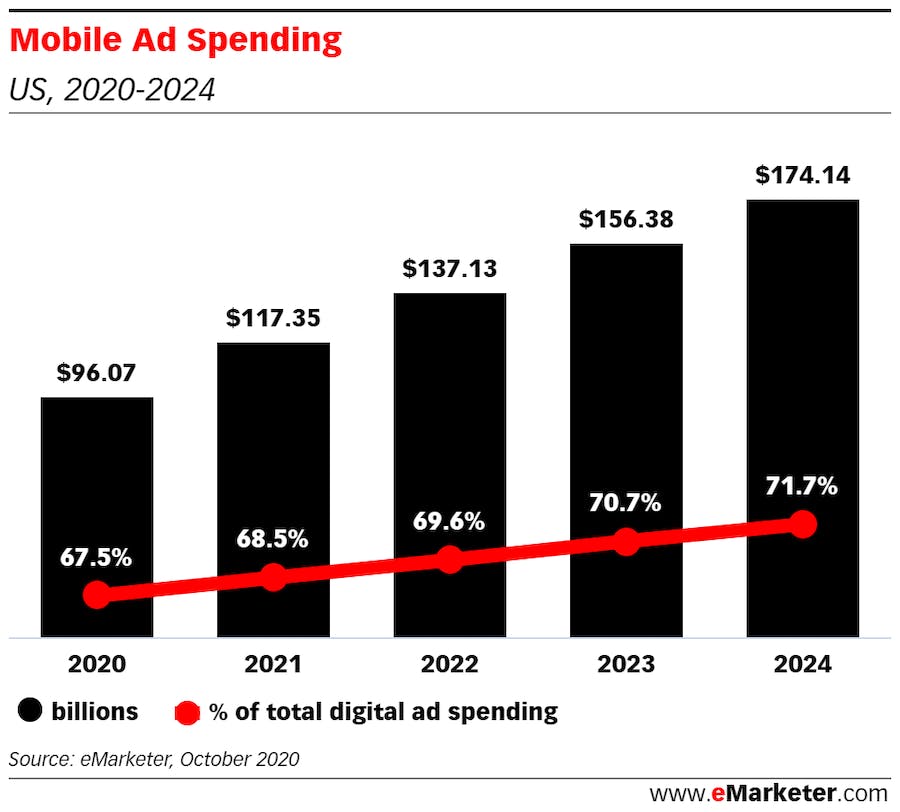Why is it necessary?
Digital media allows advertisers to track users from initial exposure to eventual conversion. This measurability has driven digital media’s explosive growth; the more effectively marketers collect and analyze campaign data, the more effectively they can optimize. But conclusions drawn from data are only as good as the intel they’re based on, right?
As discussed in our previous post about DMPs, DSPs, and identity graphs, it’s not as simple as dropping a cookie on a user’s lone device and tracking them indefinitely. According to eMarketer, an average US household accesses 9 to 12 smart devices daily; each device is likely bombarded with ads, third-party trackers, and cookies from a slew of vendors and platforms.
One conversion, multiple touchpoints
Pat sees an ad for a new exercise bike on their phone. Later, Pat sees that same ad on their work computer. When they’re done for the day, they go to the bike’s website on a personal computer and convert. Which ad gets the credit? Which device gets the attributable conversion? More than likely none of them (it will just show up as a “direct” or “organic” desktop conversion un-influenced by ads).
How many times have you made a purchase on your phone? Maybe occasionally depending on the platform (Amazon’s mobile UI is great for eCommerce). And yet we know, both as consumers and advertisers, that whatever the device breakdown of ultimate purchases, the majority of digital media spend is on mobile now:

What does that tell us?
Well, unless the advertiser uses an attribution model that considers cross-device tracking, most of that spend isn’t getting appropriately credited. Setting phones aside, other digital mediums – CTV, digital audio, etc. – are even less likely (or impossible!) to attribute direct conversions. Will you buy a new set of shoes straight from your smart TV? Probably not. And yet we know these ads are effective (through media mix modeling, match market testing, etc.) even when we can’t directly connect a conversion to them.
TTD uses a mix of deterministic and probabilistic third-party device graphing by industry leaders, while Campaign Manager was only attributing device-to-device (saw an ad on a phone bought on the same phone). We can turn on Google’s “cross-environment” tracking and pull a retroactive report. Here’s what that showed us:

Not much better. This is because Campaign Manager leverages Google’s antiquated (and limited) cookie-based device graph. It’s largely probabilistic and tenuous at best. But maybe TTD is hyper-inflating their numbers to look good for themselves, right?! Well, we pulled TTD conversions without any cross-device attribution and got this:

Much, much closer, with the delta being explained by cross-media duplication or similar measurement vagaries.
As advertisers, we must spend our client’s money responsibly and effectively. We care more about the business outcome than the measured results. However, we need accurate data and measurements to do our job.
If we had relied solely on Campaign Manager’s system (cookie-based, limited or no cross-device tracking), we might have erroneously assumed that TTD’s CPA was 10x higher than it was and irresponsible use of money.
Instead, we found it highly effective; it just took users a handful of impressions on their phone before they went and bought on their desktop. To corroborate this, we used a combination of media mix and Pearson r-value correlation modeling, which showed a solid relationship between our TTD spend and our overall business conversions.
This measurement blindness will only become more important as cookies phase out and probabilistic models become more common. Partnering with vendors and using platforms that can cut through the clutter and appropriately track your customers is essential to measuring the success of your media dollars. Learn more about our digital marketing attribution services!
Learn more about our data and intelligence offering
Explore
More Insights?
View All InsightsQuestions?





